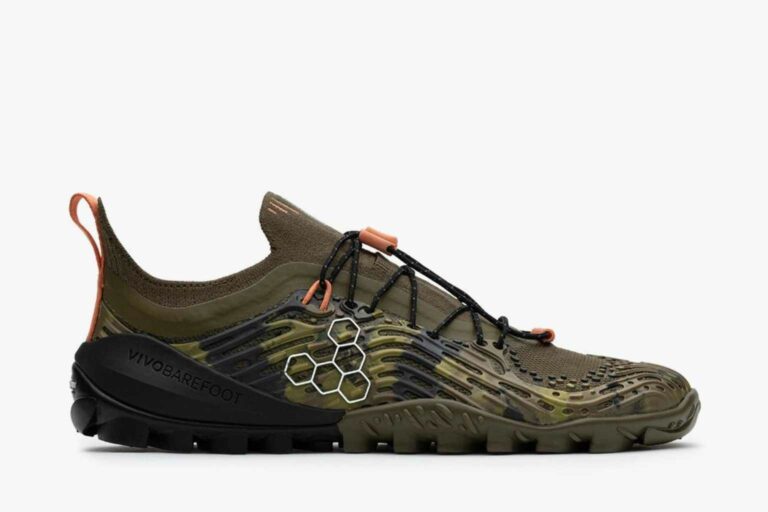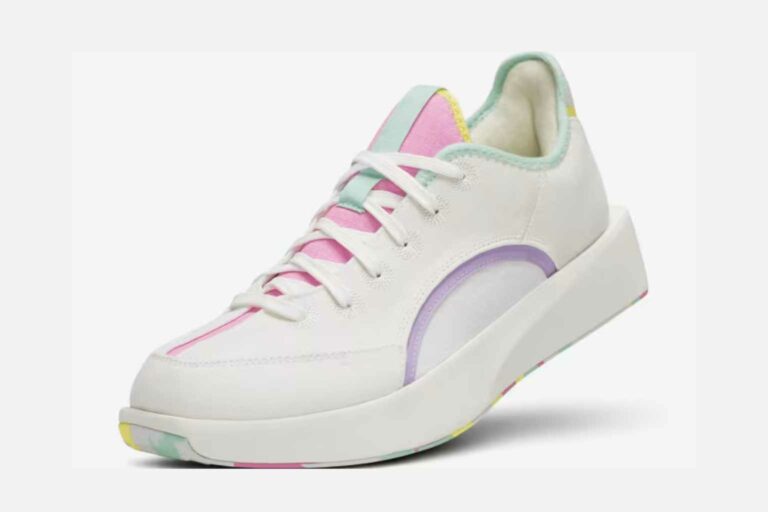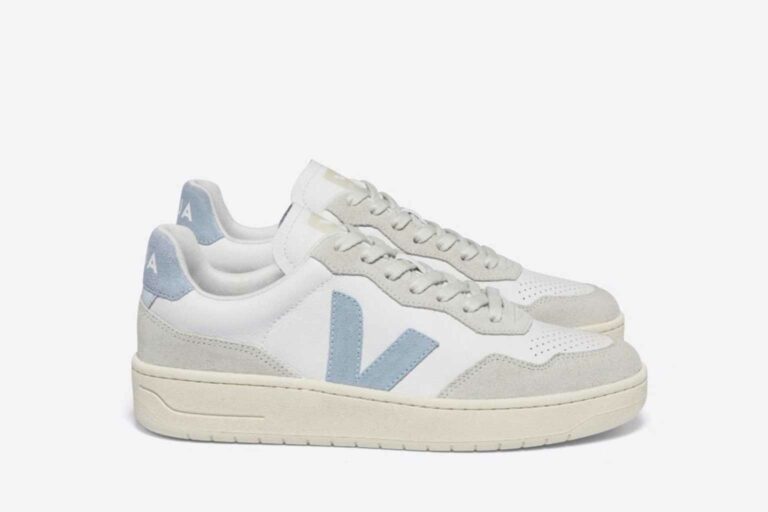
Sustainable Trainers: Introduction
Welcome to this week’s sustainability tip, where we’re lacing up to dive into the world of sustainable trainers! With the increasing demand for eco-friendly products, sustainable trainers have sprinted into the spotlight.
They’re not just a style statement but a choice for those who care about their environmental footprint. Let’s stride through the ins and outs of sustainable trainers and discover why they are a step in the right direction for our planet!
Trainers: A History
Trainers, initially designed for athletes, have sprinted far beyond the tracks. Originating in the late 18th century, the first trainers were basic rubber-soled shoes, primarily for running. By the 20th century, trainers gained popularity as sportswear, offering athletes better support and cushioning.
In the 20th century, trainers gained popularity as sportswear, offering athletes better support and cushioning. In 1924, Adidas introduced the first modern pair of trainers, marking a significant step in their evolution.
However, it was the launch of Nike in 1971 that revolutionised the industry. Nike’s waffle-soled running shoes provided exceptional comfort and performance, setting a new standard.
A major turning point came in 1985 with the introduction of the Air Jordan, a collaborative effort between Nike and basketball legend Michael Jordan. These shoes weren’t just for sports; they became a cultural phenomenon and a fashion statement.
The Air Jordan’s success paved the way for trainers to transcend their athletic roots and become a must-have fashion accessory.

Trainers, initially designed for athletes, have sprinted far beyond the tracks. Originating in the late 18th century, the first trainers were basic rubber-soled shoes, primarily for running. By the 20th century, trainers gained popularity as sportswear, offering athletes better support and cushioning. Did you know that the iconic Converse All-Stars, born in 1917, were the first mass-produced basketball shoes? And in the 1980s, trainers leapt from sports gear to everyday wear, partly thanks to the burgeoning hip-hop culture.
Trainers: Environmental Impact
Trainers have a substantial environmental footprint. The production process often relies on non-renewable resources like petroleum-based plastics and synthetic materials. This not only depletes finite resources but also requires substantial energy consumption.
In fact, it’s estimated that the production of a single pair of sneakers can generate as much as 13.5 KG of carbon dioxide emissions. Moreover, the fashion industry’s fast-paced trend cycle has encouraged the production of sneakers in high volumes, leading to overconsumption. This, in turn, increases the carbon footprint associated with their production, transportation, and distribution.
Transportation further contributes to the environmental impact of trainers. Many sneakers are manufactured in different parts of the world and are transported long distances, leading to additional carbon emissions.
Furthermore, the use of harmful chemicals in the production of sneakers, such as dyes and adhesives, can lead to water pollution and damage to ecosystems when not properly managed.

When it comes to disposal, old trainers frequently end up in landfills, where they release harmful chemicals into the environment and contribute to the growing problem of textile waste. This waste issue extends to both the sneakers themselves and their packaging materials.
Sustainable Trainers: What To Look For
When searching for sustainable trainers, consider eco-friendly materials like recycled plastics, organic cotton, and natural rubber. These materials are not only kinder to the environment but also tend to have a lower impact throughout their lifecycle. Look for certifications that indicate responsible sourcing and ethical production, such as Fair Trade or B Corp.
Brands with take-back programs or recycling initiatives can be a plus, as they demonstrate a commitment to reducing waste.
Durability is key; opt for trainers built to last. Timeless designs also play a role in sustainability, as they are less likely to go out of style quickly. Also, don’t overlook secondhand and vintage options, which not only promote sustainable fashion but can also offer unique and stylish choices.
Research brands’ sustainability efforts and transparency in their supply chain. Understanding the environmental and ethical practices of the brand can help you make an informed and responsible choice. Furthermore, keep in mind that sustainability encompasses more than just materials.

Investigate the overall production process, including eco-friendly manufacturing methods, renewable energy use, and fair labour practices. Lastly, comfort and performance should not be compromised. Look for brands that seamlessly merge sustainability with functionality. By making these considerations, you can take steps towards reducing your environmental impact while enjoying stylish and eco-friendly footwear.
Sustainable Trainers: Three of Our Favourite Brands
VIVOBAREFOOT is a leading sustainable trainer brand known for its minimalist and eco-friendly approach. They design trainers that prioritize foot health, using sustainably sourced materials such as recycled PET plastic bottles, wild rubber, and algae foam. VIVOBAREFOOT is committed to ethical manufacturing and fair labour practices. Their trainers are not only stylish but also promote natural movement, making them a great choice for those who value sustainability and foot comfort.
Sign up to their mailing list for 10% off your first order.

Allbirds has gained international recognition for its sustainable sneakers. They craft trainers using innovative materials like renewable merino wool, eucalyptus fibres, and SweetFoam made from sugarcane. Allbirds’ commitment to sustainability extends to their packaging, which is made from 90% recycled cardboard. Comfort and style are at the core of Allbirds’ designs, making them a favourite among eco-conscious consumers.
Simply recommend a friend to get £15 off your first order.

Veja, a French brand, is dedicated to transparency and sustainability. They produce trainers using organic cotton, wild rubber from the Amazon rainforest, and leather sourced from responsible producers. Veja pays fair wages and adheres to ethical production practices. Their sneakers are both fashionable and environmentally responsible, appealing to conscious consumers who value ethical fashion.
Use code FIRST10 at checkout to receive a 10% discount on your first order.

Sustainable Trainers: Wrap Up
In the journey through the world of sustainable trainers, we’ve explored their significant environmental impact, the criteria to look for when choosing them, and highlighted some top brands leading the sustainability charge. From VIVOBAREFOOT’s minimalist approach to Allbirds’ innovative materials and Veja’s commitment to transparency, these brands offer eco-conscious options.
The environmental implications of our footwear choices are substantial, but by considering materials, ethical practices, and durability, we can reduce our footprint. Sustainable trainers are more than a fashion statement; they represent a step towards a greener, more responsible future—one that combines style, comfort, and eco-consciousness.
Play It Green: Empowering Your Sustainability Journey
Ready to take your commitment to sustainability to the next level? Play It Green stands as your partner in creating positive environmental change. From educational resources on sustainable practices and signposting to sustainable services to initiatives like tree planting and social giving, Play It Green offers a holistic approach to environmental stewardship.
Join us in the journey toward sustainability—embrace eco-conscious practices and be a force for positive change in our world. All whilst staying relevant, meeting legislation and aligning with the values of today’s consumers and employees.







